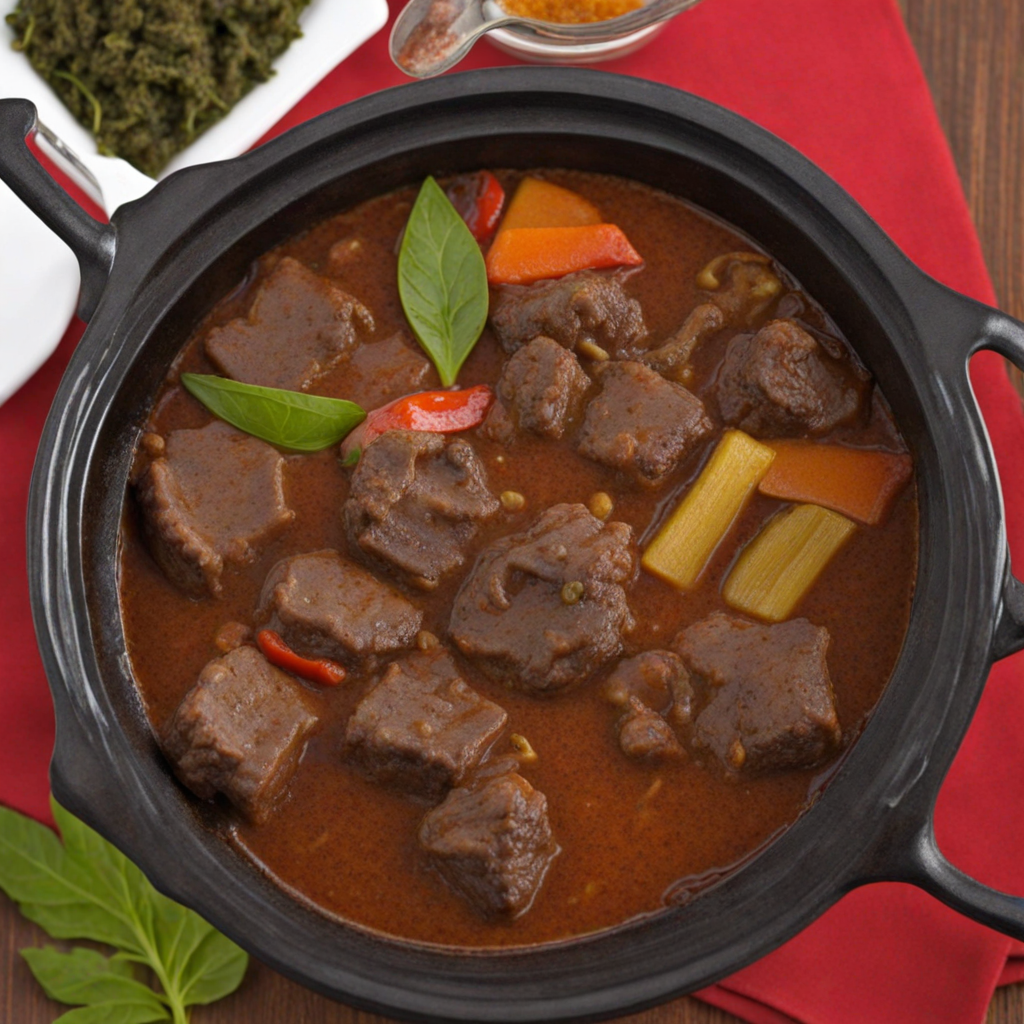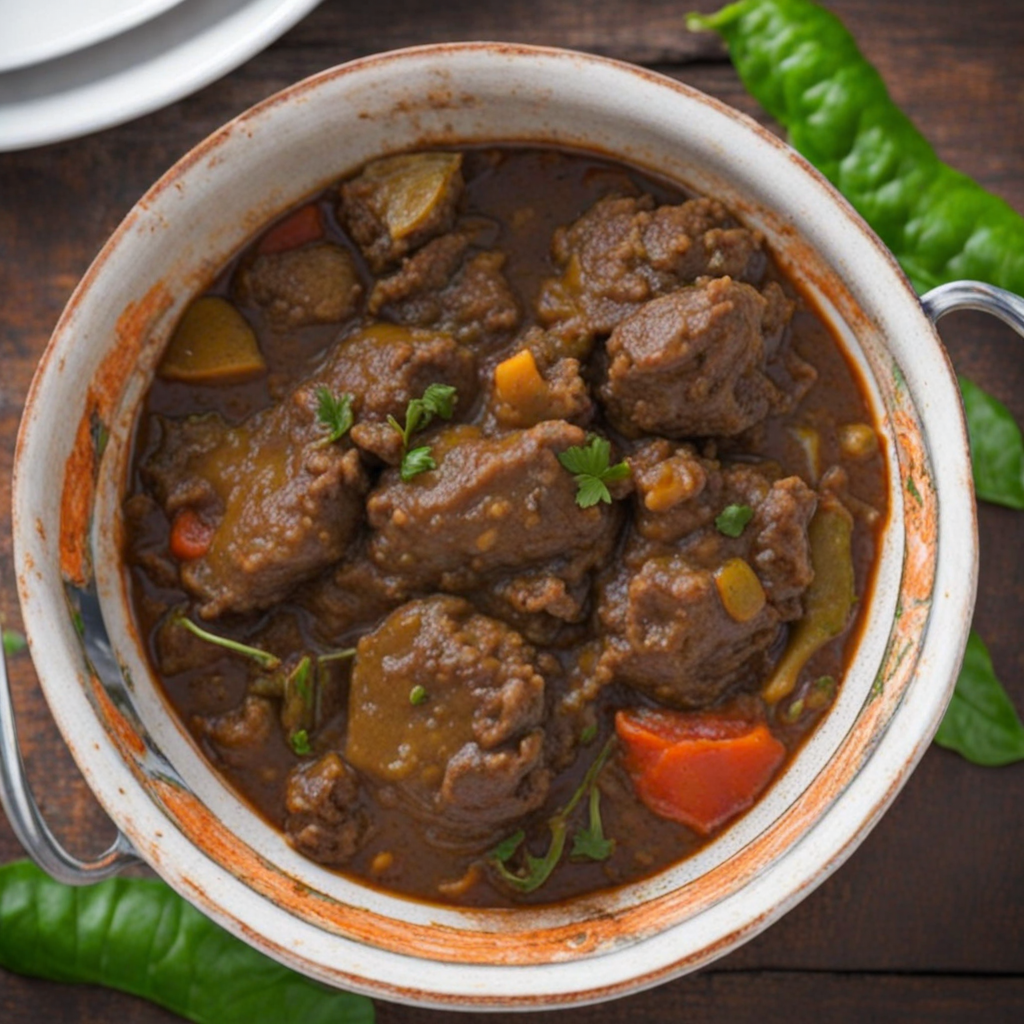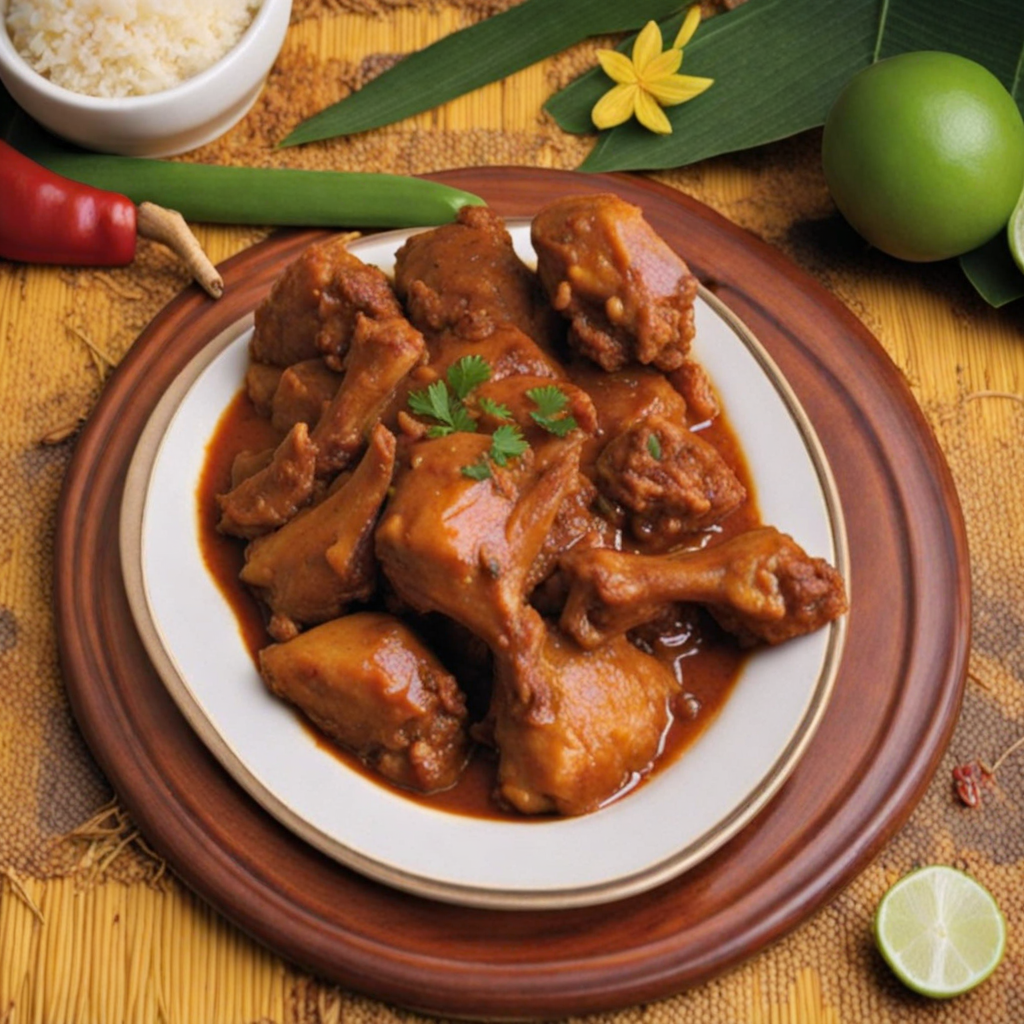Pepperpot
Pepperpot is a vibrant and aromatic stew that holds a special place in Saint Lucian cuisine. This dish is a delightful blend of flavors, featuring tender pieces of meat—often beef or pork—slow-cooked with a medley of spices such as allspice, cinnamon, and cloves. The use of fresh herbs and ingredients like garlic, onions, and bell peppers adds depth and complexity, creating a harmonious balance of savory and slightly sweet notes. The rich, dark sauce is often thickened with the addition of cassareep, a sweet and tangy syrup made from cassava that enhances the dish's flavor profile and imparts a beautiful, deep color to the stew.
How It Became This Dish
The History of Pepperpot: A Culinary Treasure of Saint Lucia Pepperpot, a rich and aromatic stew, is one of the emblematic dishes of Saint Lucia, a beautiful island nation in the Caribbean known for its diverse culture, stunning landscapes, and vibrant culinary traditions. To fully appreciate Pepperpot, we must delve into its origins, cultural significance, and its evolution over time, all of which reflect the complex history of Saint Lucia itself. Origins Pepperpot can trace its roots back to the indigenous peoples of the Caribbean, particularly the Arawaks and Caribs, who inhabited the islands long before European colonization. These groups relied on local ingredients, utilizing spices, herbs, and meats from their environment to create flavorful dishes. The legacy of these indigenous peoples laid the groundwork for what would become the unique culinary identity of Saint Lucia. The arrival of European colonizers in the 15th and 16th centuries introduced new elements to the island's cuisine. The islands became battlegrounds for European powers, chiefly the French and the British, who fought for control over the lucrative sugar trade. With colonization came the forced importation of enslaved Africans, who brought with them their own culinary traditions. The combination of indigenous ingredients and African cooking techniques infused the local cuisine with depth and complexity. Pepperpot emerged as a reflection of this cultural fusion. Traditionally, it is made with a variety of meats—commonly beef, pork, or goat—seasoned with a mix of local spices, including black pepper, allspice, and thyme. The dish is often slow-cooked with vegetables such as onions and garlic, and is sometimes enriched with the addition of cassareep, a thick, sweet sauce made from fermented cassava. This sauce not only enhances the flavor but also acts as a preservative, which was particularly useful in the days before refrigeration. Cultural Significance In Saint Lucian culture, Pepperpot is more than just a dish; it is a symbol of community, resilience, and heritage. Traditionally served during festive occasions, family gatherings, and celebrations, it embodies the spirit of togetherness. The preparation of Pepperpot can be a communal event, where family and friends come together to chop, season, and simmer the ingredients, sharing stories and laughter along the way. The significance of Pepperpot extends beyond its taste; it is often associated with the island's history of survival and adaptation. Enslaved Africans, despite their harsh realities, found ways to use available resources to create sustenance that was both nourishing and flavorful. The evolution of Pepperpot, incorporating elements from various cultures, speaks to the resilience of the human spirit and the importance of food as a means of identity. Moreover, Pepperpot is often linked to the Christmas season in Saint Lucia. Many families prepare the dish as part of their holiday feasting traditions. The rich, hearty stew warms the heart and soul during the cooler months, serving as a reminder of home and heritage. Its presence on festive tables reinforces the bonds of family and community, as well as the narrative of survival and continuity. Development Over Time Throughout the years, Pepperpot has evolved as Saint Lucia has changed. The island's culinary landscape has been influenced by globalization, tourism, and the migration of Saint Lucians to other countries, particularly the United States and Canada. As the island embraced the global culinary scene, Pepperpot began to gain recognition beyond its shores. In recent decades, Saint Lucia has seen a resurgence in interest in its culinary heritage. Chefs and home cooks alike are revisiting traditional recipes, seeking to preserve and celebrate their culinary roots. This revival has not only rejuvenated interest in Pepperpot but has also allowed for creative interpretations of the dish. Contemporary versions may feature new ingredients or innovative cooking methods, while still honoring the essence of the original recipe. The rise of food tourism has also played a significant role in the evolution of Pepperpot. Visitors to Saint Lucia are increasingly seeking authentic culinary experiences, leading to a greater appreciation for traditional dishes. Restaurants across the island now proudly feature Pepperpot on their menus, often accompanied by stories of its origins and significance. This has helped to elevate the dish to a point where it is no longer just a local delicacy but a culinary ambassador for Saint Lucia on the global stage. Furthermore, the health-conscious movement has prompted some cooks to adapt Pepperpot recipes to accommodate modern dietary preferences. While traditional versions are rich and hearty, lighter variations that emphasize fresh vegetables and leaner proteins have emerged, allowing the dish to appeal to a broader audience. This adaptability speaks to the enduring nature of Pepperpot as a beloved staple of Saint Lucian cuisine. Conclusion Pepperpot is much more than a stew; it is a narrative of Saint Lucia's history, culture, and identity. From its indigenous roots to its evolution through colonial influences and the resilience of enslaved peoples, the dish encapsulates the island's diverse heritage. As it continues to develop in the modern culinary landscape, Pepperpot remains a cherished symbol of community and tradition, serving as a bridge between the past and the present. As we savor a bowl of Pepperpot, we not only indulge in a delightful culinary experience but also partake in a rich tapestry of history, culture, and resilience—a testament to the enduring spirit of Saint Lucia and its people. Whether enjoyed during festive occasions or as a comforting meal, Pepperpot stands as a delicious reminder of the island's storied past and its vibrant present.
You may like
Discover local flavors from Saint Lucia







